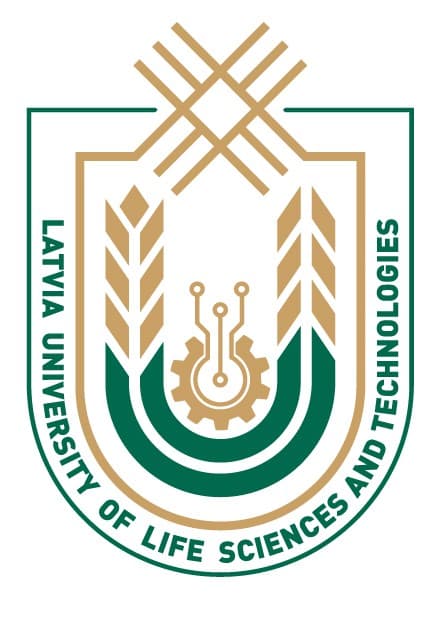References
- Almcrantz, S., Walz, E., & Spencer, T. (2024). Veterinarian of Record Relationships for Animal Shelters: Differences in Expectations between Veterinarians and Nonveterinarian Shelter Administrators. Journal of Shelter Medicine and Community Animal Health, 3. DOI: 10.56771/jsmcah.v3.70.
- Anneberg, I., Vaarst, M., & Sørensen, J. (2012). The experience of animal welfare inspections as perceived by Danish livestock farmers: A qualitative research approach. Livestock Science, 147. 49–58. DOI: 10.1016/j.livsci.2012.03.018.
- Avery, A. (2020, February). Rip-Off Veterinarians! Are Vets Just In It For The Money? Our Pets Health. Retrieved October 10, 2024, from https://ourpetshealth.com/info/rip-off-veterinarians.
- Barry, J., & Dordević, J. (2007). What’s the point of revolution if we can’t dance? Boulder: Urgent Action Fund for Women’s Rights.
- Beverland, M. B., Farrelly, F., & Lim, E. A. C. (2008). Exploring the dark side of pet ownership: Status-and control-based pet consumption. Journal of Business Research, 61, 490–496.
- Biele, H. (2012, November). 3 ways your veterinary practice can avoid problems with animal shelters, rescue groups, do good for pets and pet owners, and maintain your bottom line with smart relationships with rescue groups and shelters. Veterinary Economics. Retrieved October 10, 2024, from https://www.dvm360.com/view/3-ways-your-veterinary-practice-can-avoid-problems-with-animal-shelters-rescue-groups.
- Butler-Kisber, L. (2018). Qualitative inquiry. SAGE Publications Ltd. DOI: 10.4135/9781526417978.
- Cavanaugh, L. A., Leonard, H. A., & Scammon, D. L. (2007). A tail of two personalities: How canine companions shape relationships and well-being. Journal of Business Research, 61(5), 469–479. https://doi.org/10.1016/j.jbusres.2007.07.024.
- Cobb, J. (2016). Exploring Collaborations between Veterinarians & Rescues/Shelters. Shelter Management and Adoption Procedures Collection, 1. Retrieved October 10, 2024, from https://www.wellbeingintlstudiesrepository.org/shemapro/1.
- Creswell, J. W., & Creswell, J. D. (2018). Research design: Qualitative, quantitative, and mixed methods approaches (5th ed.). Sage.
- Davis, R. (2013). Understanding Volunteerism in an Animal Shelter Environment: Improving Volunteer Retention. College of Professional Studies Professional Projects.
- Dzīvnieku aizsardzības likums. (1999). Latvijas Vēstnesis, (444-445).
- Dzīvnieku policija. (2019a). Dzīvnieku policija, apvienojot 25 dzīvnieku aizsardzības organizācijas, iesniegusi 13. Saeimai savus priekšlikumus. Retrieved October 10, 2024, from Dzīvnieku policija: http://info.dzivniekupolicija.lv/lv/aktualitate/dzivniekupolicija-apvienojot-25-dzivniekuaizsardzibasorganizacijas-iesniegusi-13-saeimaisavus-priekslikumus.
- Dzīvnieku policija. (2019b). Nāc un paud savu viedokli Saeimai par dzīvnieku aizsardzībai svarīgiem jautājumiem piketā maijā! Retrieved October 10, 2024, from Dzīvnieku policija: http://info.dzivniekupolicija.lv/lv/aktualitate/nac-un-paudsavuviedokli-saeimai-pardzivnieku-aizsardzibaisvarigiem-jautajumiem-piketa-maija.
- Fontana, A., & Frey, J.H. (2008). The Interview: From Neutral Stance to Political Involvement. In N. Denzin & Y. Lincoln (Eds.), Collecting and interpreting qualitative materials, (3rd ed.). Los Angeles, CA: SAGE Publications.
- Ford, J. S. (2016). Managing multiple (dis) identifications: Questioning the desirability and utility of identification in volunteer work [Ph.D. The University of Texas at Austin]. Retrieved October 10, 2024, from https://repositories.lib.utexas.edu/bitstream/handle/2152/39543/FORD-DISSERTATION-2016.pdf?sequence=1.
- Fournier, A. K., & Mustful, B. (2019). CF: Presenting issues and practical applications for animal care professionals. In L. Kogan & C. Blazina (Eds.), Clinician’s guide to treating companion animal issues (pp. 511-534). Academic Press.
- Jasper, J. M., & Poulsen, J. D. (1995). Recruiting strangers and friends: moral shocks and social networks in animal rights and anti-nuclear protests. Social Problems, 42(4), 493–512.
- Hearing, R., Wilson, V., Zhuo, A., & Stathis, P. (2021). A survey of veterinary professionals about their interactions with free-living native animals and the volunteer wildlife rehabilitation sector in New South Wales, Australia. Australian Zoologist, 41(2), 254–282. DOI: https://doi.org/10.7882/AZ.2020.045.
- Hennink, M. M., Kaiser, B.N., Marconi, V.C. (2017). Code Saturation Versus Meaning Saturation: How Many Interviews Are Enough? Qualitative Health Research, 27(4), 591-608. DOI: 10.1177/1049732316665344.
- Herbst, A. (2019, September). KICK ASS Responses to “Vets Only Care About Money”. Kick Ass Vets. Retrieved October 10, 2024, from https://www.kickassvets.com/blogs/blogResponsesToAbuse.php.
- Effler, E. S. (2010). Laughing saints and righteous heroes: Emotional rhythms in social movement groups. Chicago: University of Chicago Press.
- Keith, Ch. (2014). Animal Groups and Vets Working Together. Retrieved October 10, 2024, form https://www.maddiesfund.org/everybody-wins-groups-and-vets-working-together.htm.
- King, N., & Horrocks, C. (2010). Interviews in qualitative research. Sage: London.
- McArthur, M., & Fitzgerald, J. (2013). Companion animal veterinarians’ use of clinical communication skills. Australian Veterinary Journal, 91(9), 374–380. https://doi.org/10.1111/avj.12083.
- Miles, M. B., Huberman, A. M., & Saldana, J. (2014). Qualitative data analysis: A methods sourcebook (3rd ed.). Sage.
- Morris, A. (2015). A practical introduction to in-depth interviewing. SAGE Publications Ltd. DOI: 10.4135/9781473921344.
- Nätti, S., Pekkarinen, S., Hartikka, A., & Holappa, T. (2014). The intermediator role in value co-creation within a triadic business service relationship. Industrial Marketing Management, 43(6), 977–984. https://doi.org/10.1016/j.indmarman.2014.05.010.
- Neumann, S. L. (2010). Animal welfare volunteers: who are they and why do they do what they do? Anthrozoös, 23(4), 351-364. DOI: 10.2752/1753 03710X12750451259372.
- Osório, A. (2016). Sociabilities and sensitivities: Recruitments in Homeless Animal Care. Vibrant: Virtual Brazilian Anthropology, 13(2), 143–159. DOI: 10.1590/1809-43412016v13n2p143.
- Roark, A. (2017, July). How This Tech Responds To “Vets are in it For the Money”. Dr.Andy Roark. Retrieved October 10, 2024, from https://drandyroark.com/tech-responds-vets-money.
- Rötzmeier-Keuper, J., & Wünderlich, N. V. (2014). Interdependent relationships between and among service providers and customer collectives. In R. H. Tsiotsou, & Y. Hajidimitriou (Eds.). 8th AMA ServSig Conference Proceedings (pp. 27–28). Chicago: American Marketing Association.
- Rötzmeier-Keuper, J., Lerch, J., Wünderlich, N., & Schmitz, G. (2018). Triadic relationships in the context of services for animal companions. Journal of Business Research, 85, 295–303. DOI: 10.1016/j.jbusres.2018.01.003.
- Sarantakos, S. (2005). Social Research (Third Edition). New York: Palgrave Macmillan. Saunders, B., Sim, J., Kingstone, T., & Baker,
- Sh. (2018). Saturation in qualitative research: exploring its conceptualization and operationalization. Quality & Quantity, 52(4), 1893–1907 (2018). DOI: 10.1007/s11135-017-0574-8.
- Schabram, K., & Maitlis, S. (2017). Negotiating the challenges of a calling: Emotion and enacted sensemaking in animal shelter work. Academy of Management Journal, 60(2), 584–609. DOI: 10.5465/amj.2013.0665.
- Schwandt, T. A. (2013). On the mutually informing relationship between practice and theory in evaluation. American Journal of Evaluation, 35(2), 231–236. DOI: 10.1177/1098214013503703.
- Solodov, D. (2021). Crimes of animal cruelty in Poland: Case studies. Forensic Science International Animals and Environments, 1, 100010. https://doi.org/10.1016/j.fsiae.2021.100010.
- Šeiko, S., Možarova, A., & Ņikišins, J. (2024). Bridging Compassion and Commerce: Veterinarians’ Ethical Dilemmas in Providing Care for Homeless Animals. Rural Sustainability Research, 51, 50–57. DOI: 10.2478/plua-2024-0005.
